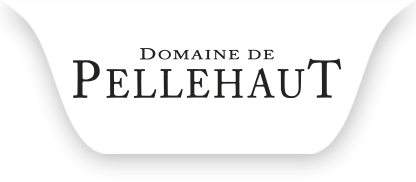All year round the team at Pellehaut (twenty permanent employees) work hard to produce and bottle wines and armagnacs.
PRODUCING THE BEST POSSIBLE GRAPES…
The secret to winemaking lies first and foremost in the vineyard.Winemakers are not magicians: they can only produce quality wines with quality grapes. And so we do our utmost in the vineyard to ensure that the grapes attain optimum ripeness.
This means continuous and detailed monitoring of the vines and in particular, strict control:
- Of yields
Managed grass cover in the vines and the use of compost-based organic fertiliser adjusted on the basis of soil and vegetation analyses to suit the needs of each parcel.
- Of pests
Regular counting, the support of a computerised meteorological station and recording of all the vineyard operations to restrict the number of treatments.
- Of ripening
Ripeness monitoring for each variety parcel by parcel from mid-August for the early varieties (Chardonnay, Sauvignon) to late October for the late varieties (Gros Manseng and Petit Manseng).Grape sampling, tasting and analysis of the juice in our laboratory (total acidity, potential degree, etc.) to harvest each parcel at optimum ripeness.
…THEN HARVESTING AND FERMENTING THEM UNDER IDEAL CONDITIONS
To protect the bunches of grapes as far as possible, most of the harvesting is done at night.The lower temperatures help conserve the aromas contained in the grape skins, which are sensitive to sunshine, and helps limit oxidation.

The grapes are transported rapidly to the winery by truck in stainless steel trailers.At the winery, the destemmed grapes are transferred by gravity, without pumping, into a hopper without a screw conveyor which allows 50% of the run-off juice to be collected immediately before the white grapes are unloaded into the pneumatic presses and the red into the self-emptying fermentation tanks.
The whites are pressed after grape skin maceration (in the press), the duration of which varies depending on the year and the grape variety.The reds remain in the tanks for two to three weeks on average before being transferred by gravity, without pumping, into the pneumatic press.
This is where the work of the winemaker starts, with the choice of the fermentation method and the duration of maceration and élevage – the period between fermentation and bottling – and so on.
After numerous trial blendings and tastings, the proportion of each vat or barrel that will go into the final blends to ensure even quality from year to year is determined.









